Audrey Hepburn in Paris
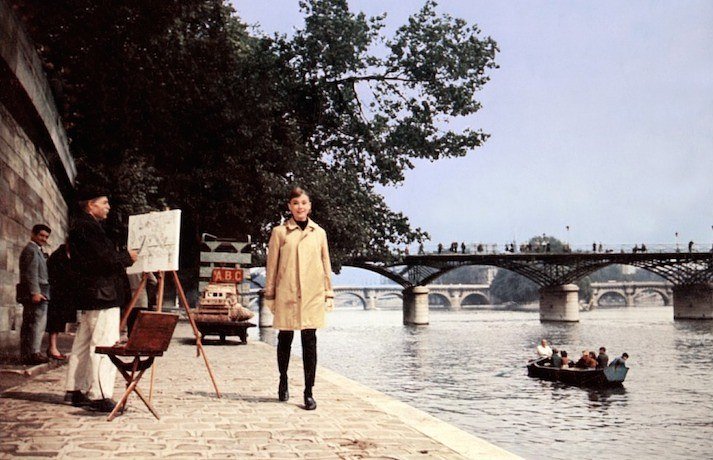
Fri 29 Aug 2014
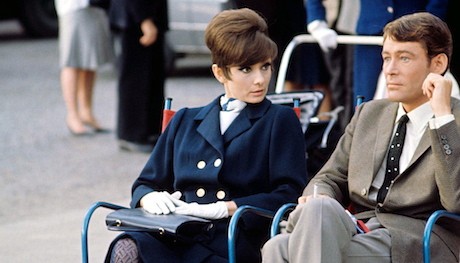
Audrey Hepburn with Peter O’Toole while filming How to Steal a Million in Paris, 1966.
I always picture Audrey Hepburn in Paris. Even though she never lived there. Even though her first breakout movie was set in Rome. Even though her heritage was English and Dutch and she settled in Switzerland.
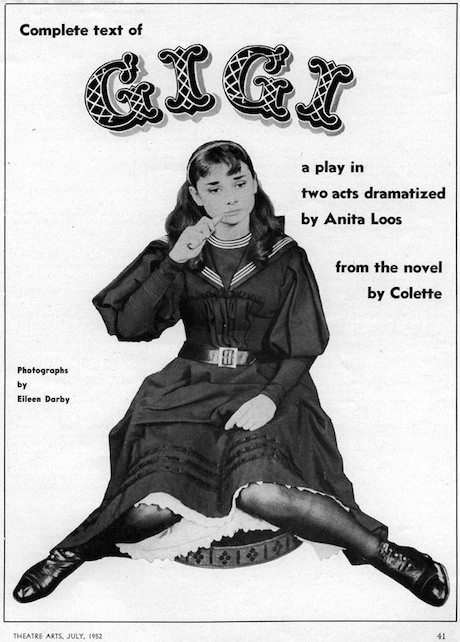
Perhaps it is because she first came to public attention playing the title role of Gigi on Broadway in 1951. Colette, author of the story Gigi, had spotted Audrey in Monte Carlo, playing a small role in a forgettable film, and immediately knew that she was looking at the embodiment of her Parisian heroine.
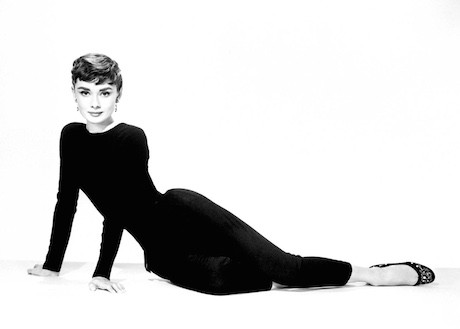
Publicity still for Sabrina
Or perhaps it was the 1954 film Sabrina, in which Audrey represents the ultimate American dream: you go to Paris as a gawky teenager and return looking so unbelievably chic that your old friends no longer recognize you. Who hasn’t at some point secretly hoped that a visit to Paris would result in a similar transformation? Be honest now. In all, Audrey made only six films either on location or at the film studios in Paris: Funny Face (1957), Love in the Afternoon (1957), Charade (1963), Paris When It Sizzles (1964), How to Steal a Million (1966) and Two for the Road (1967). A musical, a steamy love story, a thriller, a comedy/fantasy, a heist/romance, and a drama about the ups and downs of a married English couple during their visits to France―Hepburn’s Paris films show the range of her talents.
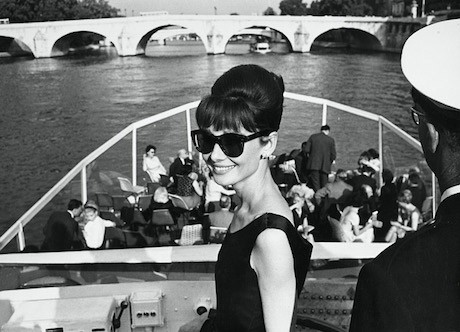
Audrey on a publicity trip on the Seine, photo via Cinematheque.fr
But it was Sabrina, shot in the United States, that cemented her connection with the city. Paris is not the setting for this film; rather, it is one of the characters. At one point, Audrey tells Humphrey Bogart: “Paris isn’t for changing planes, it’s for changing your outlook! For throwing open the windows and letting in . . . letting in la vie en rose.” The film also marked the beginning of the enduring partnership between Audrey and Hubert de Givenchy. At first, Audrey was dismayed at the director’s decision to pass over the Hollywood costume designer Edith Head, whom she liked and trusted, in favor of some upstart Frenchman called Givenchy, who was hired to create several of the gowns she wore in the film.
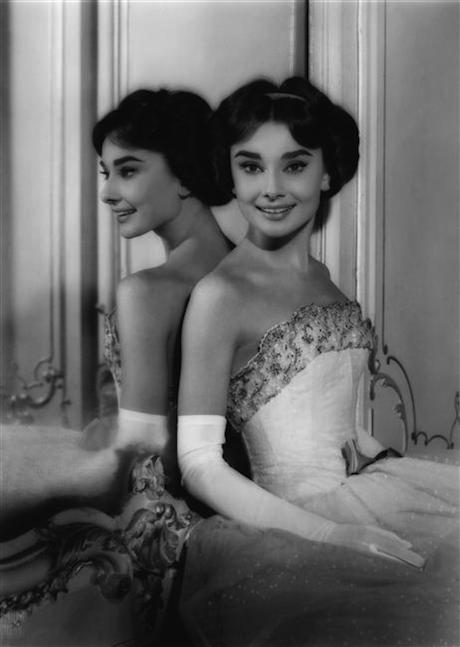
Audrey Hepburn in Givenchy
Hepburn was so concerned that well before filming began, she went to the designer’s studio on the avenue George V to talk to him. He’d never heard of her, and vaguely expected that it was Katharine Hepburn who was coming to see him. Despite this unpromising beginning, they developed a strong bond and continued as partners for many decades.
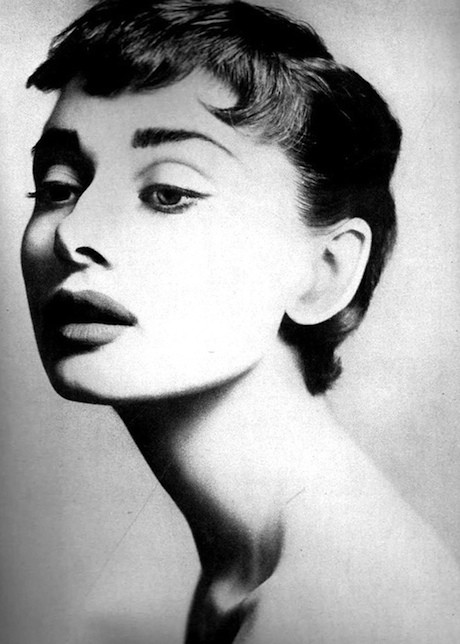
Audrey by Avedon
Three years later, Audrey Hepburn was back in Paris, staying at the Hôtel Raphaël, for a film shot on location in the city. Funny Face brought together Audrey and Givenchy with the dancer Fred Astaire as her leading man (he was 57, Audrey was 28), composer George Gershwin, photographer Richard Avedon, model Suzy Parker and the flamboyant actress and writer Kay Thompson (the author of Eloise in Paris, among other children’s books, who played a role inspired by Diana Vreeland). Key scenes are shot in all the major tripist sights—the Louvre, Notre Dame, the Arc de Triomphe and the Eiffel Tower. These scenes were filmed at dawn to avoid the crowds of tripists that swarmed around at every other time. Then Audrey had a month’s vacation before embarking on her next Paris film, Love in the Afternoon, with Gary Cooper, another older man (he was 55). She kept her suite at the Hôtel Raphaël, but the film showcases the Ritz. The unconvincing story never really connected with audiences, and I admit it still makes me feel a little queasy.
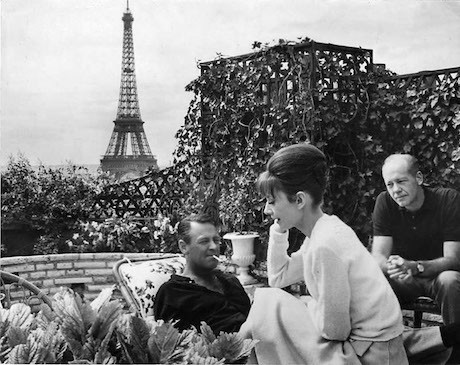
In Paris while filming with William Holden on the roof of the Hotel Raphael.
I feel the same about Paris When It Sizzles (1964), the filming of which was complicated by William Holden’s heavy drinking. Apparently Audrey did not enjoy working on it, and I think it shows. This weird film took so long to edit that Charade, filmed some months later, was released earlier.
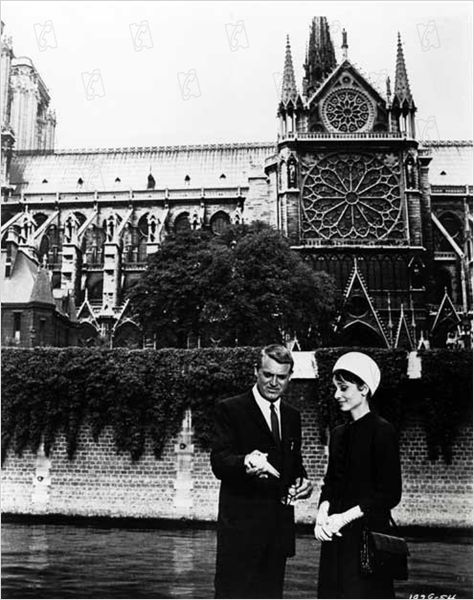
Cary & Audrey at Notre Dame
Charade, with Cary Grant, is another story entirely. OK, Grant was also much older than Audrey, but he was still a charmer and when she challenges him with the line, “Do you know what’s wrong with you?” every woman in the audience agrees when she answers her own question: “Nothing!” My other favorite line from that film comes earlier, when she meets Grant at a ski resort in the mountains. When he tries to introduce himself, she puts him off, saying, “I already know an awful lot of people, and until one of them dies, I couldn’t possibly meet anyone else.” I love that line. I keep hoping I can use it some day.
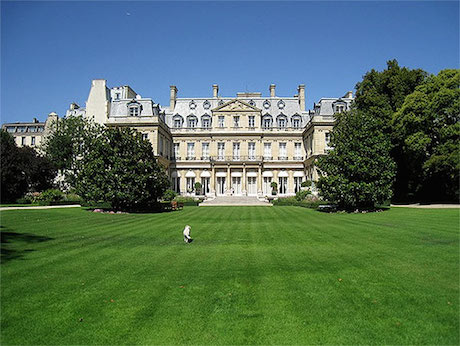
US Embassy
The film is ideal for “spot-that-location-in-Paris” buffs. The apartment building that Audrey returns to, only to find her flat stripped of all furniture, is actually the Musée Cernuschi, at 7, avenue Vélasquez, near the parc Monceau. She takes refuge at the Hôtel Saint-Jacques, 35, rue des Ecoles. The U.S. Embassy makes several appearances, and the rue Monge and the rue Censier feature in the scene in which a suspicious Audrey follows Cary. She gets ice cream on his immaculate suit near the pont de l’Archevêché and they take a riverboat down the Seine (Michael Schürmann, author of Paris Movie Walks, notes that they manage to pass the Académie Française twice in less than 20 minutes on this trip). The final showdown takes place at the Palais Royal. During the filming, Audrey had a husband and a rambunctious two-year-old to factor into her decisions, and she needed more space. She abandoned the Hôtel Raphaël for an 18th-century mansion outside the city. But as the filming stretched into the fall and winter, the château grew cold, and Audrey and her family returned to the hotel.
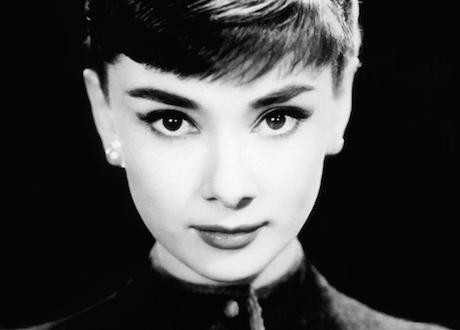
How to Steal a Million, filmed three years later, is my favorite, and Audrey enjoyed working with Peter O’Toole, someone closer to her own age. Although it was not a great box-office success when it first appeared in cinemas, it has not dated like so many other 1960s films and remains chic and breezy.
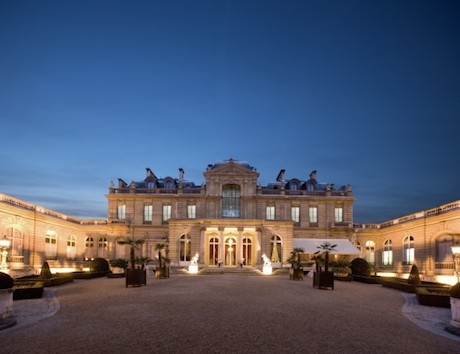
Jacquemart Andre Museum
The interiors were filmed in the Boulogne-Billancourt studios, but the exteriors range from the Ritz (again); to the Musée Jacquemart-André, at 158, boulevard Haussmann, masquerading as the fictitious Musée Kléber-Lafayette; to the pont de la Tripnelle, where Audrey makes her first appearance, driving a tiny red Autobianchi Eden Roc. The house at 38, rue Parmentier, in Neuilly, where much of the action takes place, has since been demolished.
Two for the Road was not set in Paris, but the interiors were filmed at the studios in Boulogne-Billancourt. The movie paired Audrey with a young Albert Finney (he was seven years younger than she was), and showed her in a very different light—more experienced, more world-weary, more mature. And she didn’t wear Givenchy this time, as the role called for a more ready-to-wear, off-the-rack look. That was the last film Audrey Hepburn made in France. She returned to Paris occasionally, and continued to collaborate with Givenchy, but she never again shot a film in the city.
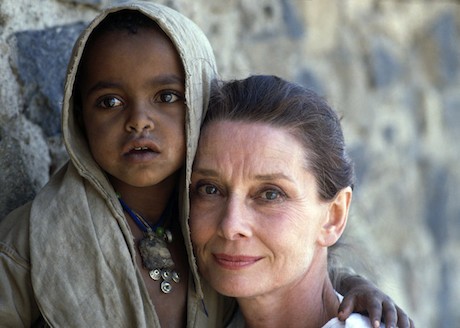
Audrey Hepburn at UNICEF ambassador in 1988, Ethiopia.
She lived in Switzerland, divorced, remarried, had another child, divorced again and became a spokesperson for UNICEF. She watched her sons grow up and met a younger man with whom she felt at ease. Audrey Hepburn was never a Parisienne, yet she embodies what many of us long for when we visit Paris: elegance and wit, grace and style.
Philippa Campsie writes for the blog Parisian Fields, which covers everything from contemporary street art to Paris history and she created our gg2p Audrey Hepburn do-it-yourself walking trip of Paris which you can download here.